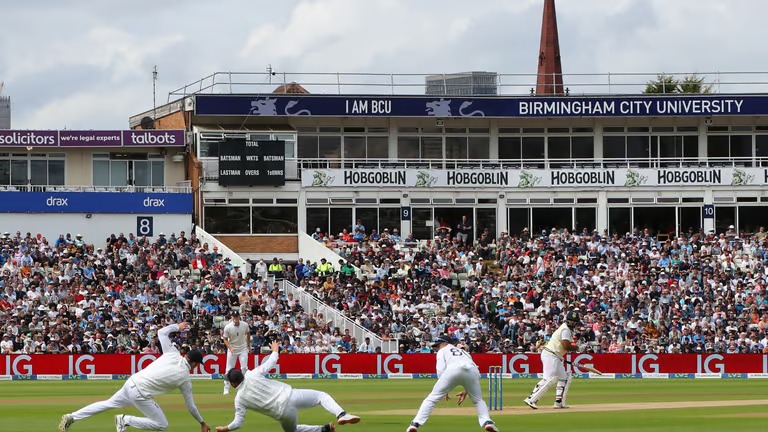In terms of Test cricket, this is Groundhog Day. Once more. It occurs when current and former administrators, as well as players, speak at press conferences and podcasts and declare that the game’s longest format is soon to expire. But this time, about the state of the five-day game, everyone of them may be correct.

Yes, things have never been better on some level. Australia, India, and England will play five-match Test series against each other over the course of the next forty months or thereabouts. According to the Future Tours Programme (FTP), India is scheduled for 20 Tests against the so-called other members of the Big Three, including the five Test series against England, which starts with the first in the city on Thursday. Only 14 Test matches between them and the other full members are scheduled for this time frame.
England, who play more red-ball cricket than any other country, will face Australia or India in 15 of their games. Against the other complete members, they total 22. Aside from a home Ashes match against England, Australia will play two complete blocks of five Tests against India.
They are down to 16 versus the other full members, with one match against the West Indies coming up in a few days. Profitable tests are possible, but only in situations when the Big Three compete. Regarding the opposing sides? Not in that way. But money isn’t even the issue here.
The franchise-based T20 leagues pose a danger, thus boards can no longer deploy their first-choice XI. Prioritizing the local SA20, South Africa selected a third-choice team a few weeks ago for their next assignment against New Zealand. As a result, former Australian captain Steve Waugh began to doubt the format’s viability. “Is this a turning point in the demise of Test cricket?” he asked on Instagram.
Simultaneously, Test expert Usman Khawaja expressed empathy for the players who choose to participate in T20 leagues. “If I was a player from another nation and getting paid ok to play international cricket (and if) I’m getting paid a truckload more to play T20 cricket, I’m sorry but I’m going to be playing T20 cricket,” the opener told Fox Cricket. “… it’s also a case of looking after your family, doing things right.”
Consider the Jason Holder case. The all-rounder from West Indies did not go to Australia with the Test squad. Rather, he played for the Dubai Capitals in the ILT20 (captain David Warner, who just retired from Test cricket), instead. Kyle Mayers is another player in the similar situation. He is a player in the SA20 for the Super Giants of Durban.
Scheduling Test cricket at a time when there are no leagues is the best way to guarantee its position at the top of the cricketing food chain. Paying top payment to play the longest format is another, easier approach to make sure the best players don’t give up. Better spoken than done. Not every board member is wealthy. Redistributing the money in a more equal manner is one way the International Cricket Council (ICC) may make this happen.
It’s not fair at all right now. India (38.5%), Australia (6.2%), and England (almost 7%), for instance, account for more than half of the money that the ICC makes. In any case, they are the richest boards already. They also get the highest salaries. Because they earn far more than, say, New Zealand or South Africa, Cricket Australia, the ECB, or the BCCI can afford to offer its players enormous salaries.
The global stakeholders should unite and dissolve the unwritten oligopoly that has persisted since the Big Three got together around 10 years ago in order to rebalance the budgets. Is there a desire for the ECB, BCCI, and CA to forfeit a portion of their holdings during the next rights cycle, which runs from 2027 to 2031?
They may do that, if CA Chair Mike Baird is to be believed. “… might mean costs and consequences for the leading countries,” he had said while speaking about the subject with the Sydney Morning Herald. “There’s no denying the economic component. However, there’s also a practical aspect with our scheduling and our group’s overall prioritization. Thus, there is a strong determination, but we must act much more quickly.
“We must prioritize the maintenance, expansion, and support of Test cricket. Allocating funds is one aspect of this process. We need to examine how that money is being spent and make sure it is going to the proper things because I don’t believe we can wait,” he said. In addition, Baird sits on the Finance and Commercial Affairs Committee of the ICC, which is led by Jay Shah.
To put it simply, India is capable of far more. On a fundamental basis, BCCI receives approximately forty cents for every dollar earned by ICC. It seems sense that they get the majority of the prize money given that they serve as the global game’s financial hub. However, why such a big skew?
Sumod Damodar, a member of the ICC Chief Executives Committee, had such opinion until last year. He told this publication, “I don’t think anybody has a problem with India taking home the biggest pie.” It makes sense, fundamental economics. However, how can we determine what is fair?”
This question will be put out once again when the rights cycle for associate and full members is ready for distribution. Baird and his colleagues at the ECB and BCCI will take action to correct the disparity if they are sincere about doing so.
